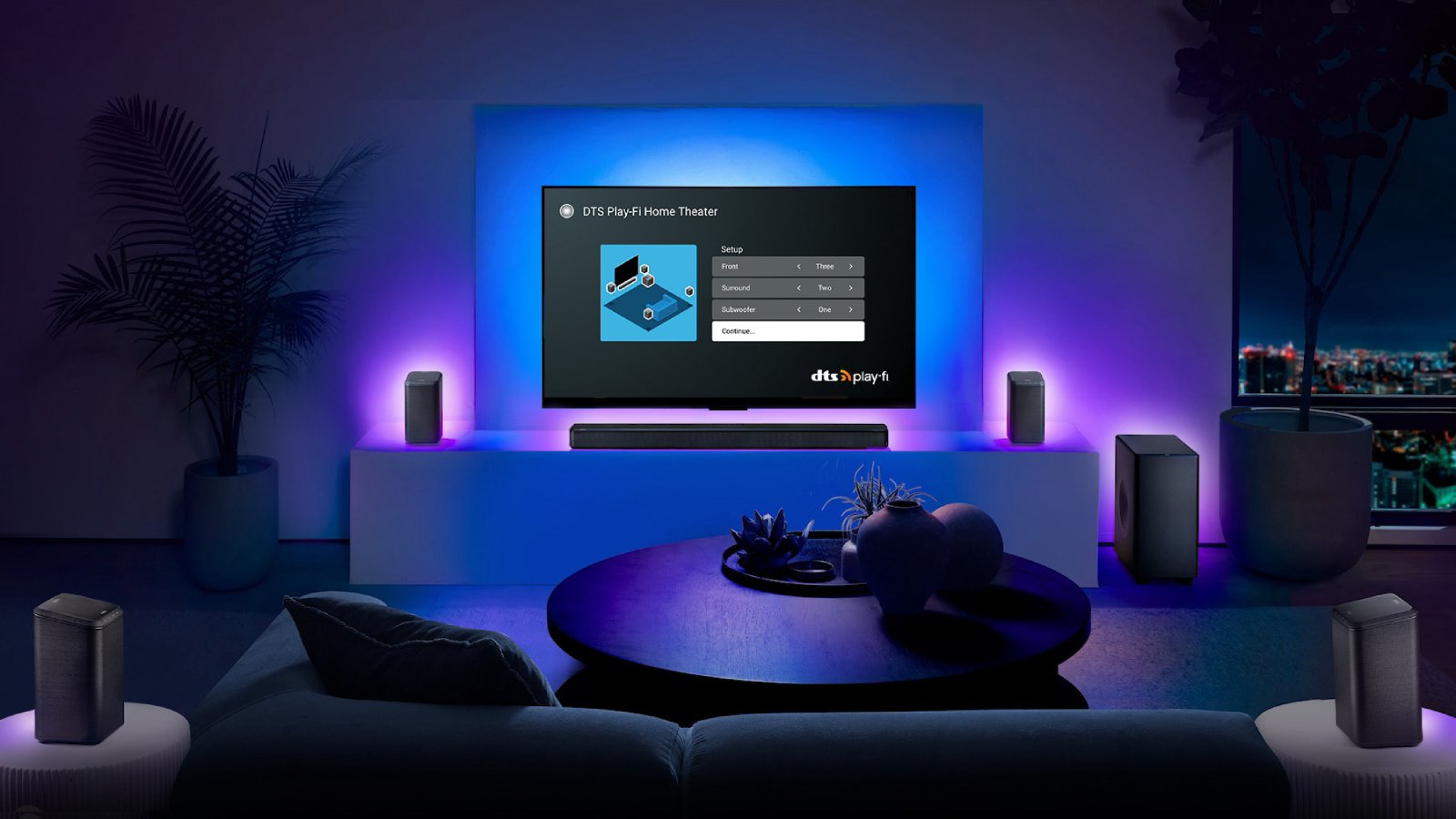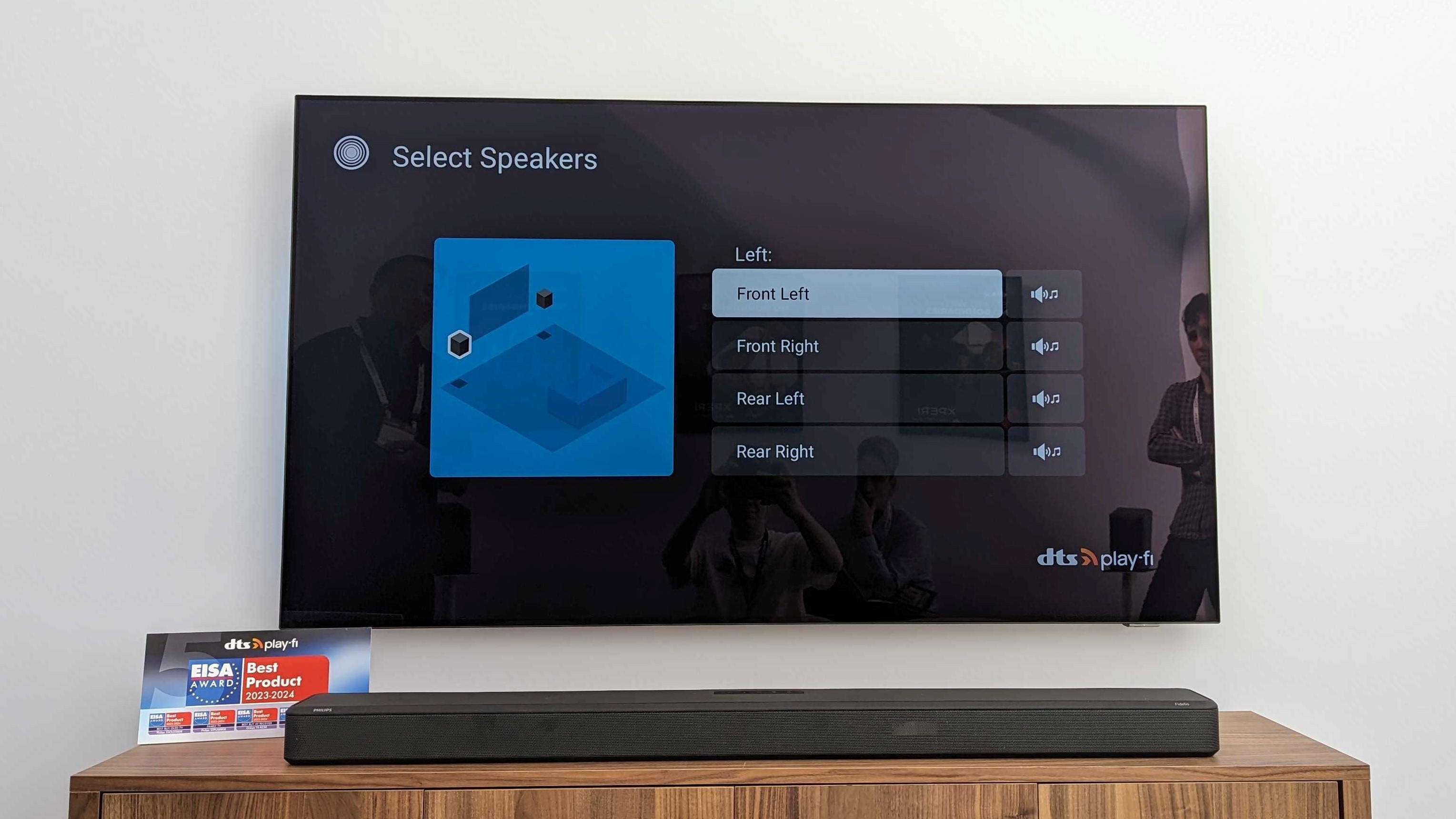I just tried the future of wireless Dolby Atmos surround sound – and it’s everything I could want
DTS Play-Fi wants to make wireless surround speakers and soundbars work

Here in Berlin at IFA 2023, I just had the chance to listen to the latest version of DTS Play-Fi surround sound, a completely wireless audio setup that is clearly the future of home theater – and I’m here for it.
A version of DTS Play-Fi has been available for a few years, but at launch you could only achieve a 5.1 channel setup – not bad, but not really on par with premium audio systems. The latest version of Play-Fi that I got to try can now offer up to 12 channels of discrete sound (up to 7.2.4) for immersive audio, either in Dolby Atmos or DTS:X. These expanded capabilities allow you to achieve a truly immersive audio experience that lives up to the title of “home movie theater,” but without any cables between all your speakers. We first heard about this coming last year, but now DTS has confirmed that it will launch soon on Philips TVs in Europe.
The immersive quality is true of all surround sound setups, of course – whether I was using Play-Fi’s system or a traditional wired one I would have been just as immersed in Dolby Atmos content such as Netflix’s Drive to Survive docuseries as I was in the booth today. What gives DTS Play-Fi the edge is its simplicity. Setting it up takes no time at all, and you don’t have to be all that tech-confident to get great results.

Simple and clean
Creating a surround sound setup at home has its challenges. Your room will be a mess of wires between your TV, AV receiver, and speakers, and you’ll want to make sure everything is programmed appropriately for the capabilities of your audio tech. It’s a lot easier to just buy one of the best Dolby Atmos soundbars, but that uses up one of your TV's precious HDMI ports – and as good as soundbars are, they're not quite the same as a true multi-speaker setup.
The DTS Play-Fi system is designed to give you the best of both – bringing true immersive sound as well as simplicity.
Based on what I’ve seen, this is certainly the case. The audio experience was superb, and getting it set up took relatively no time at all. You wirelessly connect your speakers to the TV, tell it the layout you have, what kinds of speakers you’re using (such as the TV’s in-built audio system, a soundbar, or other external speakers), and then set each speaker to its appropriate spot in the digital layout you’ve created in the Play-Fi menu with your choices.

Once that’s done, the TV will enter the setup phase where it communicates with each speaker to find out what its capabilities are, and tune your audio setup based on them. For example if your front speakers are both side and upfiring, your Play-Fi TV will detect this and adjust your audio settings appropriately. You’ll then be presented with a menu where you can manually adjust settings if you wish, but if you aren’t super tech-svavvy you don’t need to – beyond maybe adjusting volume settings if some speakers are prone to overpowering the rest.
Sign up for breaking news, reviews, opinion, top tech deals, and more.
All-in the process took maybe five minutes or so before we could jump into enjoying the surround sound, and once it’s set up in your home you won’t need to do it again unless you want to change the layout you have.
Talk of wireless this and wireless that probably has home theater fans rightly concerned about latency – I was a little worried before my demo too – but Play-Fi has that covered. The DTS representative leading the demo explained that the latency is “sub 1ms,” and in action there was no noticeable lag between what I saw onscreen and what I heard from the speakers around me. It was just as good as any wired setup.
The only catch as it were is that you’ll need Play-Fi capable hardware for your TV and speakers. The tech is not overly widespread – so far, only Philips TVs in Europe have been announced as working with it – but as the capabilities of Play-Fi continue to grow we’ll hopefully see more TVs and speakers adopt it to help bring its approachable surround sound to more homes.
You might also like

Hamish is a Senior Staff Writer for TechRadar and you’ll see his name appearing on articles across nearly every topic on the site from smart home deals to speaker reviews to graphics card news and everything in between. He uses his broad range of knowledge to help explain the latest gadgets and if they’re a must-buy or a fad fueled by hype. Though his specialty is writing about everything going on in the world of virtual reality and augmented reality.